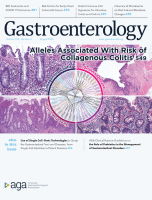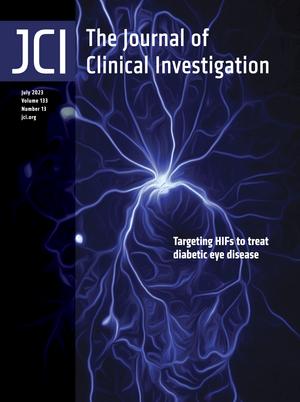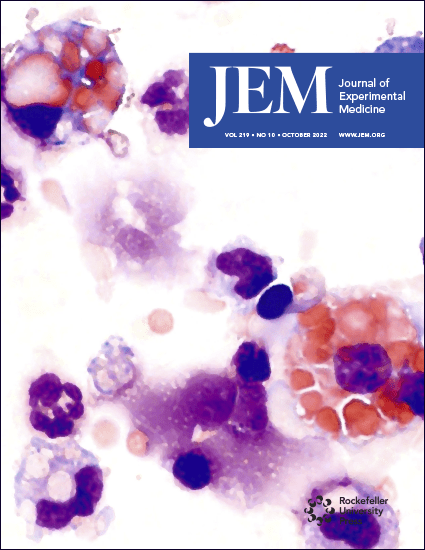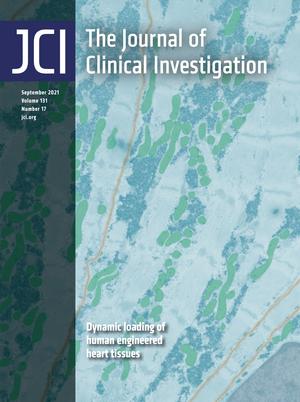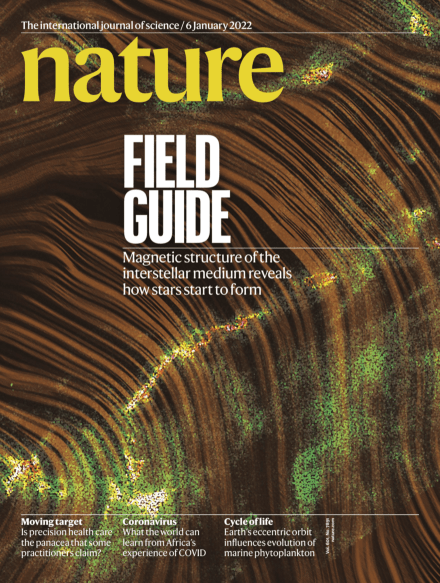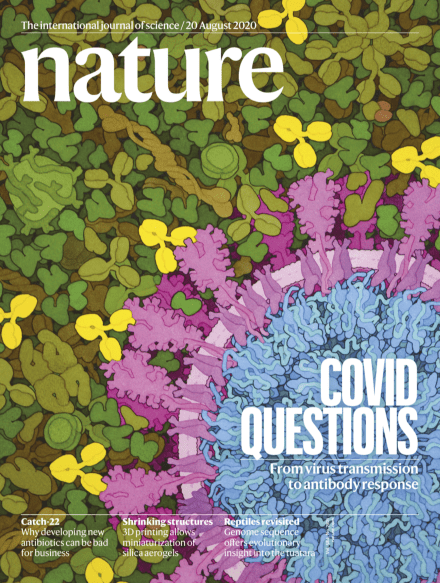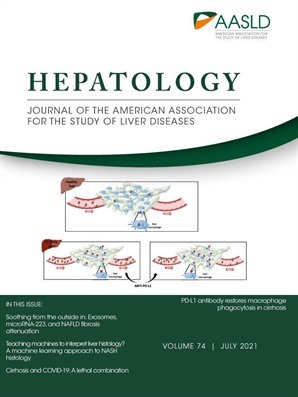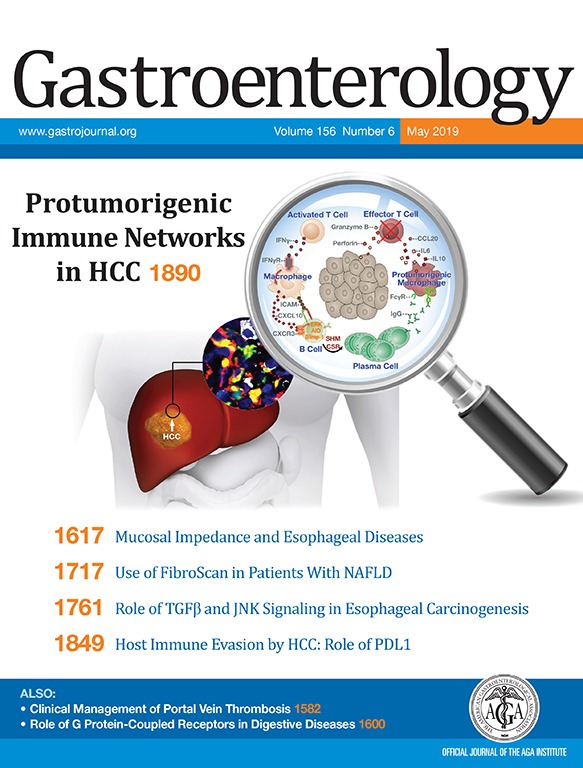
For a full bibliography, please visit PubMed
- Selected Publications
- Latest Publications
Selected Publications
-
Effects of Hepatitis B Surface Antigen on Virus-Specific and Global T Cells in Patients With Chronic Hepatitis B Virus infection.
Abstract
Background & aims: Chronic hepatitis B virus (HBV) infection is characterized by the presence of defective viral envelope proteins (hepatitis B surface antigen [HBsAg]) and the duration of infection-most patients acquire the infection at birth or during the first years of life. We investigated the effects of these factors on patients’ lymphocyte and HBV-specific T-cell populations.
Methods: We collected blood samples and clinical data from 243 patients with HBV infection (3-75 years old) in the United Kingdom and China. We measured levels of HBV DNA, HBsAg, hepatitis B e antigen, and alanine aminotransferase; analyzed HBV genotypes; and isolated peripheral blood mononuclear cells (PBMCs). In PBMCs from 48 patients with varying levels of serum HBsAg, we measured 40 markers on nature killer and T cells by mass cytometry. PBMCs from 189 patients with chronic infection and 38 patients with resolved infections were incubated with HBV peptide libraries, and HBV-specific T cells were identified by interferon gamma enzyme-linked immune absorbent spot (ELISpot) assays or flow cytometry. We used multivariate linear regression and performed variable selection using the Akaike information criterion to identify covariates associated with HBV-specific responses of T cells.
Results: Although T- and natural killer cell phenotypes and functions did not change with level of serum HBsAg, numbers of HBs-specific T cells correlated with serum levels of HBsAg (r = 0.3367; P < .00001). After we performed the variable selection, the multivariate linear regression model identified patient age as the only factor significantly associated with numbers of HBs-specific T cells (P = .000115). In patients younger than 30 years, HBs-specific T cells constituted 28.26% of the total HBV-specific T cells; this value decreased to 7.14% in patients older than 30 years.
Conclusions: In an analysis of immune cells from patients with chronic HBV infection, we found that the duration of HBsAg exposure, rather than the quantity of HBsAg, was associated with the level of anti-HBV immune response. Although the presence of HBs-specific T cells might not be required for the clearance of HBV infection in all patients, strategies to restore anti-HBV immune responses should be considered in patients younger than 30 years.
-
Prevalence and Functional Profile of SARS-CoV-2 T Cells in Asymptomatic Kenyan Adults.
Abstract
Background: SARS-CoV-2 infection in Africa has been characterized by a less severe disease profile than what has been observed elsewhere, but the profile of SARS-CoV-2–specific adaptive immunity in these mainly asymptomatic patients has not, to our knowledge, been analyzed.
Methods: We collected blood samples from residents of rural Kenya (n = 80), who had not experienced any respiratory symptoms or had contact with individuals with COVID-19 and had not received COVID-19 vaccines. We analyzed spike-specific antibodies and T cells specific for SARS-CoV-2 structural (membrane, nucleocapsid, and spike) and accessory (ORF3a, ORF7, ORF8) proteins. Pre-pandemic blood samples collected in Nairobi (n = 13) and blood samples from mild-to-moderately symptomatic COVID-19 convalescent patients (n = 36) living in the urban environment of Singapore were also studied.
Results: Among asymptomatic Africans, we detected anti-spike antibodies in 41.0% of the samples and T cell responses against 2 or more SARS-CoV-2 proteins in 82.5% of samples examined. Such a pattern was absent in the pre-pandemic samples. Furthermore, distinct from cellular immunity in European and Asian COVID-19 convalescents, we observed strong T cell immunogenicity against viral accessory proteins (ORF3a, ORF8) but not structural proteins, as well as a higher IL-10/IFN-γ cytokine ratio profile.
Conclusions: The high incidence of T cell responses against different SARS-CoV-2 proteins in seronegative participants suggests that serosurveys underestimate SARS-CoV-2 prevalence in settings where asymptomatic infections prevail. The functional and antigen-specific profile of SARS-CoV-2–specific T cells in African individuals suggests that environmental factors can play a role in the development of protective antiviral immunity.
-
SARS-CoV-2 Breakthrough Infection in Vaccinated Individuals Induces Virus-specific Nasal-resident CD8 and CD4 T Cells of Broad Specificity.
Abstract
Rapid recognition of SARS-CoV-2–infected cells by resident T cells in the upper airway might provide an important layer of protection against COVID-19. Whether parenteral SARS-CoV-2 vaccination or infection induces nasal-resident T cells specific for distinct SARS-CoV-2 proteins is unknown. We isolated T cells from the nasal mucosa of COVID-19 vaccinees who either experienced SARS-CoV-2 infection after vaccination (n = 34) or not (n = 16) and analyzed their phenotype, SARS-CoV-2 specificity, function, and persistence. Nasal-resident SARS-CoV-2–specific CD8+ and CD4+ T cells were detected almost exclusively in vaccinees who experienced SARS-CoV-2 breakthrough infection. Importantly, the Spike-specific T cells primed by vaccination did not suppress the induction of T cells specific for other SARS-CoV-2 proteins. The nasal-resident T cell responses persisted for ≥140 d, with minimal sign of waning. These data highlight the importance of viral nasal challenge in the formation of SARS-CoV-2–specific antiviral immunity at the site of primary infection and further define the immunological features of SARS-CoV-2 hybrid immunity.
-
Rapid Measurement of SARS-CoV-2 Spike T Cells in Whole Blood from Vaccinated and Naturally Infected Individuals.
Abstract
Defining the correlates of protection necessary to manage the COVID-19 pandemic requires the analysis of both antibody and T cell parameters, but the complexity of traditional tests limits virus-specific T cell measurements. We tested the sensitivity and performance of a simple and rapid SARS-CoV-2 spike protein-specific T cell test based on the stimulation of whole blood with peptides covering the SARS-CoV-2 spike protein, followed by cytokine (IFN-γ, IL-2) measurement in different cohorts including BNT162b2-vaccinated individuals (n = 112), convalescent asymptomatic and symptomatic COVID-19 patients (n = 130), and SARS-CoV-1-convalescent individuals (n = 12). The sensitivity of this rapid test is comparable to that of traditional methods of T cell analysis (ELISPOT, activation-induced marker). Using this test, we observed a similar mean magnitude of T cell responses between the vaccinees and SARS-CoV-2 convalescents 3 months after vaccination or virus priming. However, a wide heterogeneity of the magnitude of spike-specific T cell responses characterized the individual responses, irrespective of the time of analysis. The magnitude of these spike-specific T cell responses cannot be predicted from the neutralizing antibody levels. Hence, both humoral and cellular spike-specific immunity should be tested after vaccination to define the correlates of protection necessary to evaluate current vaccine strategies.
-
Pre-existing Polymerase-specific T Cells Expand in Abortive Seronegative SARS-CoV-2.
Abstract
Individuals with potential exposure to severe acute respiratory syndrome coronavirus 2 (SARS-CoV-2) do not necessarily develop PCR or antibody positivity, suggesting that some individuals may clear subclinical infection before seroconversion. T cells can contribute to the rapid clearance of SARS-CoV-2 and other coronavirus infections1,2,3. Here we hypothesize that pre-existing memory T cell responses, with cross-protective potential against SARS-CoV-2 (refs. 4,5,6,7,8,9,10,11), would expand in vivo to support rapid viral control, aborting infection. We measured SARS-CoV-2-reactive T cells, including those against the early transcribed replication–transcription complex (RTC)12,13, in intensively monitored healthcare workers (HCWs) who tested repeatedly negative according to PCR, antibody binding and neutralization assays (seronegative HCWs (SN-HCWs)). SN-HCWs had stronger, more multispecific memory T cells compared with a cohort of unexposed individuals from before the pandemic (prepandemic cohort), and these cells were more frequently directed against the RTC than the structural-protein-dominated responses observed after detectable infection (matched concurrent cohort). SN-HCWs with the strongest RTC-specific T cells had an increase in IFI27, a robust early innate signature of SARS-CoV-2 (ref. 14), suggesting abortive infection. RNA polymerase within RTC was the largest region of high sequence conservation across human seasonal coronaviruses (HCoV) and SARS-CoV-2 clades. RNA polymerase was preferentially targeted (among the regions tested) by T cells from prepandemic cohorts and SN-HCWs. RTC-epitope-specific T cells that cross-recognized HCoV variants were identified in SN-HCWs. Enriched pre-existing RNA-polymerase-specific T cells expanded in vivo to preferentially accumulate in the memory response after putative abortive compared to overt SARS-CoV-2 infection. Our data highlight RTC-specific T cells as targets for vaccines against endemic and emerging Coronaviridae.
-
SARS-CoV-2-specific T Cell Immunity in Cases of COVID-19 and SARS, and Uninfected Controls.
Abstract
Memory T cells induced by previous pathogens can shape susceptibility to, and the clinical severity of, subsequent infections1. Little is known about the presence in humans of pre-existing memory T cells that have the potential to recognize severe acute respiratory syndrome coronavirus 2 (SARS-CoV-2). Here we studied T cell responses against the structural (nucleocapsid (N) protein) and non-structural (NSP7 and NSP13 of ORF1) regions of SARS-CoV-2 in individuals convalescing from coronavirus disease 2019 (COVID-19) (n = 36). In all of these individuals, we found CD4 and CD8 T cells that recognized multiple regions of the N protein. Next, we showed that patients (n = 23) who recovered from SARS (the disease associated with SARS-CoV infection) possess long-lasting memory T cells that are reactive to the N protein of SARS-CoV 17 years after the outbreak of SARS in 2003; these T cells displayed robust cross-reactivity to the N protein of SARS-CoV-2. We also detected SARS-CoV-2-specific T cells in individuals with no history of SARS, COVID-19 or contact with individuals who had SARS and/or COVID-19 (n = 37). SARS-CoV-2-specific T cells in uninfected donors exhibited a different pattern of immunodominance, and frequently targeted NSP7 and NSP13 as well as the N protein. Epitope characterization of NSP7-specific T cells showed the recognition of protein fragments that are conserved among animal betacoronaviruses but have low homology to ‘common cold’ human-associated coronaviruses. Thus, infection with betacoronaviruses induces multi-specific and long-lasting T cell immunity against the structural N protein. Understanding how pre-existing N- and ORF1-specific T cells that are present in the general population affect the susceptibility to and pathogenesis of SARS-CoV-2 infection is important for the management of the current COVID-19 pandemic.
-
Immunosuppressive Drug Resistant Armored TCR T cells for Immune-therapy of HCC in Liver Transplant Patients.
Abstract
Background & aims: HBV-specific T-cell receptor (HBV-TCR) engineered T cells have the potential for treating HCC relapses after liver transplantation, but their efficacy can be hampered by the concomitant immunosuppressive treatment required to prevent graft rejection. Our aim is to molecularly engineer TCR-T cells that could retain their polyfunctionality in such patients while minimizing the associated risk of organ rejection Approach and results: We first analyzed how immunosuppressive drugs can interfere with the in vivo function of TCR-T cells in liver transplanted patients with HBV-HCC recurrence receiving HBV-TCR T cells and in vitro in the presence of clinically relevant concentrations of immunosuppressive tacrolimus (TAC) and mycophenolate mofetil (MMF). Immunosuppressive Drug Resistant Armored TCR-T cells of desired specificity (HBV or Epstein-Barr virus) were then engineered by concomitantly electroporating mRNA encoding specific TCRs and mutated variants of calcineurin B (CnB) and inosine-5′-monophosphate dehydrogenase (IMPDH), and their function was assessed through intracellular cytokine staining and cytotoxicity assays in the presence of TAC and MMF. Liver transplanted HBV-HCC patients receiving different immunosuppressant drugs exhibited varying levels of activated (CD39+ Ki67+ ) peripheral blood mononuclear cells after HBV-TCR T-cell infusions that positively correlate with clinical efficacy. In vitro experiments with TAC and MMF showed a potent inhibition of TCR-T cell polyfunctionality. This inhibition can be effectively negated by the transient overexpression of mutated variants of CnB and IMPDH. Importantly, the resistance only lasted for 3-5 days, after which sensitivity was restored. Conclusions: We engineered TCR-T cells of desired specificities that transiently escape the immunosuppressive effects of TAC and MMF. This finding has important clinical applications for the treatment of HBV-HCC relapses and other pathologies occurring in organ transplanted patients.
-
Use of Expression Profiles of HBV-DNA Integrated Into Genomes of Hepatocellular Carcinoma Cells to Select T Cells for Immunotherapy.
Abstract
Background and aims: Hepatocellular carcinoma (HCC) is often associated with hepatitis B virus (HBV) infection. Cells of most HBV-related HCCs contain HBV-DNA fragments that do not encode entire HBV antigens. We investigated whether these integrated HBV-DNA fragments encode epitopes that are recognized by T cells and whether their presence in HCCs can be used to select HBV-specific T-cell receptors (TCRs) for immunotherapy. Methods: HCC cells negative for HBV antigens, based on immunohistochemistry, were analyzed for the presence of HBV messenger RNAs (mRNAs) by real-time polymerase chain reaction, sequencing, and Nanostring approaches. We tested the ability of HBV mRNA-positive HCC cells to generate epitopes that are recognized by T cells using HBV-specific T cells and TCR-like antibodies. We then analyzed HBV gene expression profiles of primary HCCs and metastases from 2 patients with HCC recurrence after liver transplantation. Using the HBV-transcript profiles, we selected, from a library of TCRs previously characterized from patients with self-limited HBV infection, the TCR specific for the HBV epitope encoded by the detected HBV mRNA. Autologous T cells were engineered to express the selected TCRs, through electroporation of mRNA into cells, and these TCR T cells were adoptively transferred to the patients in increasing numbers (1 × 104-10 × 106 TCR+ T cells/kg) weekly for 112 days or 1 year. We monitored patients’ liver function, serum levels of cytokines, and standard blood parameters. Antitumor efficacy was assessed based on serum levels of alpha fetoprotein and computed tomography of metastases. Results: HCC cells that did not express whole HBV antigens contained short HBV mRNAs, which encode epitopes that are recognized by and activate HBV-specific T cells. Autologous T cells engineered to express TCRs specific for epitopes expressed from HBV-DNA in patients’ metastases were given to 2 patients without notable adverse events. The cells did not affect liver function over a 1-year period. In 1 patient, 5 of 6 pulmonary metastases decreased in volume during the 1-year period of T-cell administration. Conclusions: HCC cells contain short segments of integrated HBV-DNA that encodes epitopes that are recognized by and activate T cells. HBV transcriptomes of these cells could be used to engineer T cells for personalized immunotherapy. This approach might be used to treat a wider population of patients with HBV-associated HCC.
Latest Publications
-
Beyond exhaustion: the unique characteristics of CD8+ T cell dysfunction in chronic HBV infection
Thimme, R., Bertoletti, A. & Iannacone, M. Beyond exhaustion: the unique characteristics of CD8+ T cell dysfunction in chronic HBV infection. Nat Rev Immunol (2024). https://doi.org/10.1038/s41577-024-01097-3
-
A rapid method to assess the in vivo multi-functionality of adoptively transferred engineered TCR T cells
Anthony T Tan, Shou Kit Hang, Nicole Tan, Thinesh L Krishnamoorthy, Wan Cheng Chow, Regina Wanju Wong, Lu-En Wai, Antonio Bertoletti, A rapid method to assess the in vivo multi-functionality of adoptively transferred engineered TCR T cells, Immunotherapy Advances, Volume 4, Issue 1, 2024, ltae007, https://doi.org/10.1093/immadv/ltae007
-
Fratricide-resistant CD7-CAR T cells in T-ALL
Oh, B.L.Z., Shimasaki, N., Coustan-Smith, E. et al. Fratricide-resistant CD7-CAR T cells in T-ALL. Nat Med (2024). https://doi.org/10.1038/s41591-024-03228-8
-
T cell hybrid immunity against SARS-CoV-2 in children: a longitudinal study
Qui M, Hariharaputran S, Hang SK, Zhang J, Tan CW, Chong CY, Low J, Wang L, Bertoletti A, Yung CF, Le Bert N. T cell hybrid immunity against SARS-CoV-2 in children: a longitudinal study. EBioMedicine. 2024 Jul;105:105203. doi: 10.1016/j.ebiom.2024.105203. Epub 2024 Jun 18. PMID: 38896919; PMCID: PMC11237860.
-
Correlates of protection against symptomatic SARS-CoV-2 in vaccinated children.
Zhong Y, Kang AYH, Tay CJX, Li HE, Elyana N, Tan CW, Yap WC, Lim JME, Le Bert N, Chan KR, Ong EZ, Low JG, Shek LP, Tham EH, Ooi EE. Correlates of protection against symptomatic SARS-CoV-2 in vaccinated children. Nat Med. 2024 Apr 30. doi: 10.1038/s41591-024-02962-3.
-
Immunogenicity and safety of Sinovac-CoronaVac booster vaccinations in 12-17- year-olds with clinically significant reactions from Pfizer-BNT162b2 vaccination.
Chong CY, Kam KQ, Zhang J, Bertoletti A, Hariharaputran S, Sultana R, Piragasam R, Mah YY, Tan CW, Wang L, Yung CF. Immunogenicity and safety of Sinovac-CoronaVac booster vaccinations in 12-17- year-olds with clinically significant reactions from Pfizer-BNT162b2 vaccination. Vaccine. 2024 Apr 30;42(12):2951-2954. doi: 10.1016/j.vaccine.2024.04.011.
-
SARS-CoV-2 immunity.
Bertoletti A. SARS-CoV-2 immunity. Cell Mol Immunol. 2024 Feb;21(2):101-102. doi: 10.1038/s41423-024-01128-y.
-
Engineering immunosuppressive drug-resistant armored (IDRA) SARS-CoV-2 T cells for cell therapy.
Chen Q, Chia A, Hang SK, Lim A, Koh WK, Peng Y, Gao F, Chen J, Ho Z, Wai LE, Kunasegaran K, Tan AT, Le Bert N, Loh CY, Goh YS, Renia L, Dong T, Vathsala A, Bertoletti A. Engineering immunosuppressive drug-resistant armored (IDRA) SARS-CoV-2 T cells for cell therapy. Cell Mol Immunol. 2023 Nov;20(11):1300-1312. doi: 10.1038/s41423-023-01080-3.
-
BNT162b2 vaccine induced variant-specific immunity, safety and risk of Omicron breakthrough infection in children aged 5 to 11 years: a cohort study.
Yung CF, Le Bert N, Kam KQ, Saffari SE, Tan CW, Mah YY, Zhang J, Yeoh AY, Zhu F, Hariharaputran S, Chong CY, Bertoletti A, Wang L. BNT162b2 vaccine induced variant-specific immunity, safety and risk of Omicron breakthrough infection in children aged 5 to 11 years: a cohort study. Sci Rep. 2023 Oct 13;13(1):17337. doi: 10.1038/s41598-023-44565-x.
-
Lytic efficiency of immunosuppressive drug-resistant armoured T cells against circulating HBV-related HCC in whole blood.
Lin M, Bhakdi SC, Tan D, Lee JJX, Tai DWM, Pavesi A, Wai LE, Wang T, Bertoletti A, Tan AT. Lytic efficiency of immunosuppressive drug-resistant armoured T cells against circulating HBV-related HCC in whole blood. Immunother Adv. 2023 Aug 14;3(1):ltad015. doi: 10.1093/immadv/ltad015.

